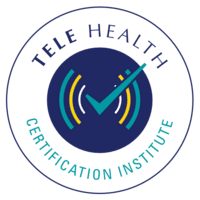JAMIA recently published their study on the US Department of Veteran Affairs (VA) initiative to bring telehealth to Veterans in serious need of healthcare and with barriers to accessing care. Eighty-six VA facilities provided tablets with telehealth capabilities to 6,745 patients.
Why did this initiative take place?
The study states that “Geographic and travel barriers are potentially the greatest obstacle to VA access” and that “Over half of Veterans living in rural areas receive their primary care at larger urban VA facilities, making receipt of appropriate and timely care challenging for them.” A report from the VHA Office of Rural Health notes that nearly a third of the approximately 9 million enrolled veterans receiving VA healthcare live in rural, highly rural, or insular island areas.
The study acknowledges that another impediment to healthcare, particularly mental healthcare, among veterans is the perceived stigma of seeking such care. The study also states that “Veterans in rural areas are significantly less likely to receive mental health treatment, such as psychotherapy than those living in urban settings.”
Implementation of the Initiative
The VA’s Offices of Rural Health and Connected Care created an effort to bring access to healthcare directly to Veterans with barriers to in-person care by providing them with tablets that had secure video technology. The study states that “The tablets have built-in WiFi or 4G mobile data connectivity and pre-paid access to a national wireless provider’s data network” and that “The devices were preconfigured by the vendor to be compatible with VA OI&T requirements including encryption. They were loaded with videoconferencing software and VA mobile apps but did not allow for other connectivity outside of the VA environment.”
Patients were issued these devices and received telehealth services from their providers during scheduled “clinical video to home” visits. The study states, “Tablet appointments could be used for any care that didn’t require physical contact.”
Barriers
There were clearly identifiable barriers. The most common obstacles were staff-shortage and lack of telehealth training according to surveys of participants and project leads. “Interviews with FTCs and telehealth leads echoed the survey findings and suggest that most implementation barriers were related to staffing and training needs, and clinician engagement.”
The surveys indicated that anywhere from 44-53% (depending on the distribution sites) of the barriers to implementation were due to “Training Needs for the Tablet Initiative.”
Conclusion and Next Steps
According to the JAMIA report, “VA’s initiative to distribute video telehealth tablets to high-need patients appears to have successfully reached individuals with social and clinical access barriers. Implementation strategies that address staffing constraints and provider engagement may enhance the impact of such efforts.”
The VA, according to their MISSION ACT of 2018, committed to offering any patient interested in video telehealth the ability to receive this care by 2020. This means addressing the connectivity issue many Veterans face without home internet connectivity or living in regions without broadband connectivity. It also will require the VA to establish staffing and training initiatives in the implementation of telehealth and for them to address the reasons why some patients did not utilize the tools they were given for remote care.
As far as training initiatives go, we have your team covered. Let us know how we can help increase the quantity and quality of your telehealth services.



The course was so informative and I was glued to my screen for the entire duration. I received so much knowledge concerning ethics in telehealth and I am greatly encouraged to read about all the standards and policies that pertain to my practice. Thank you!.